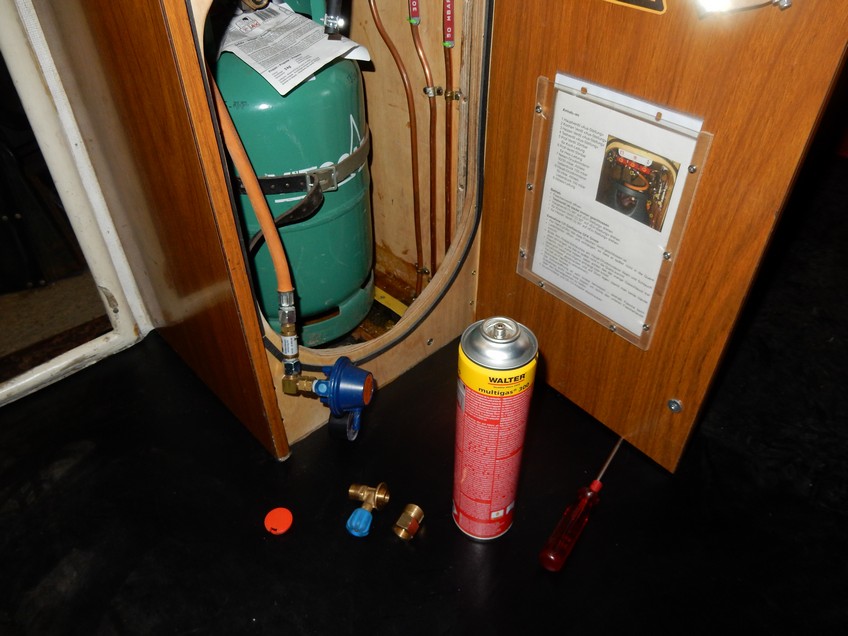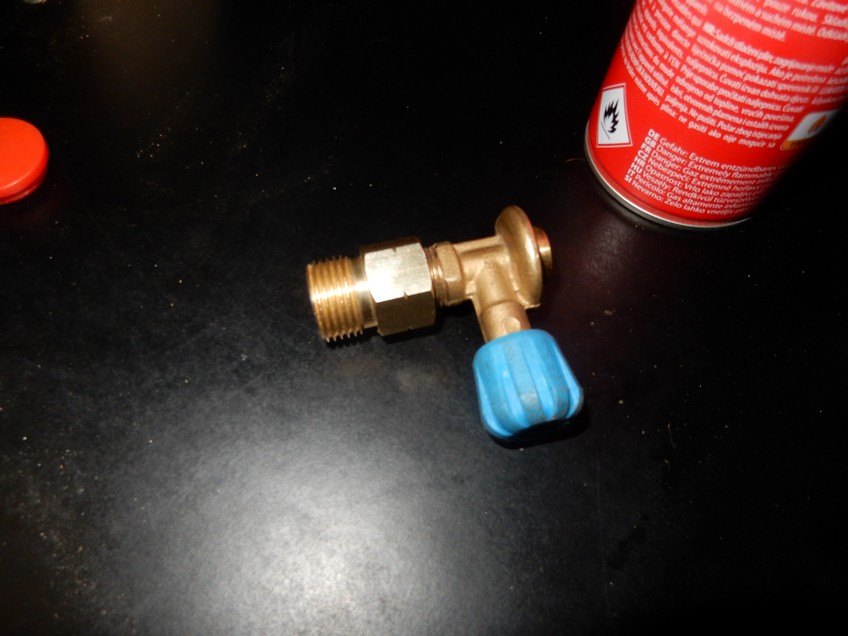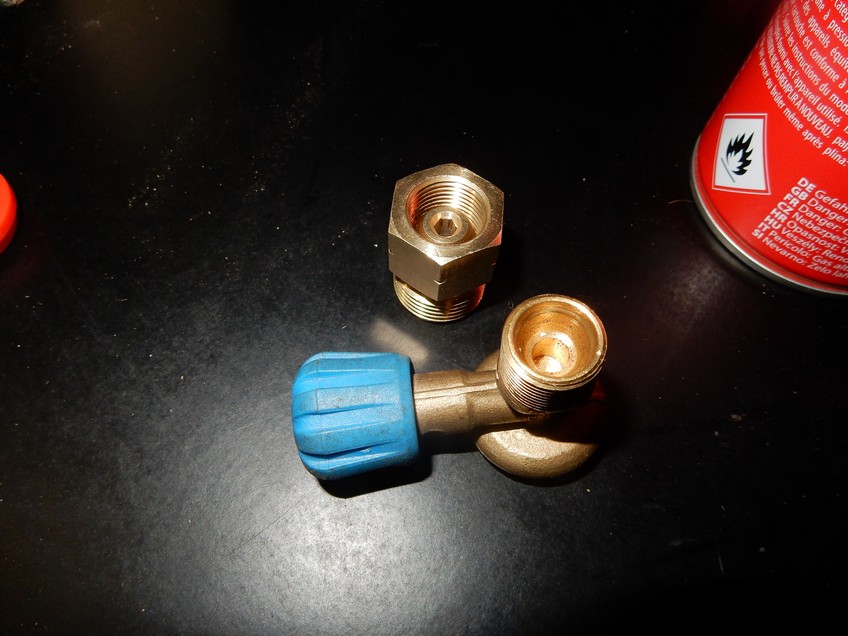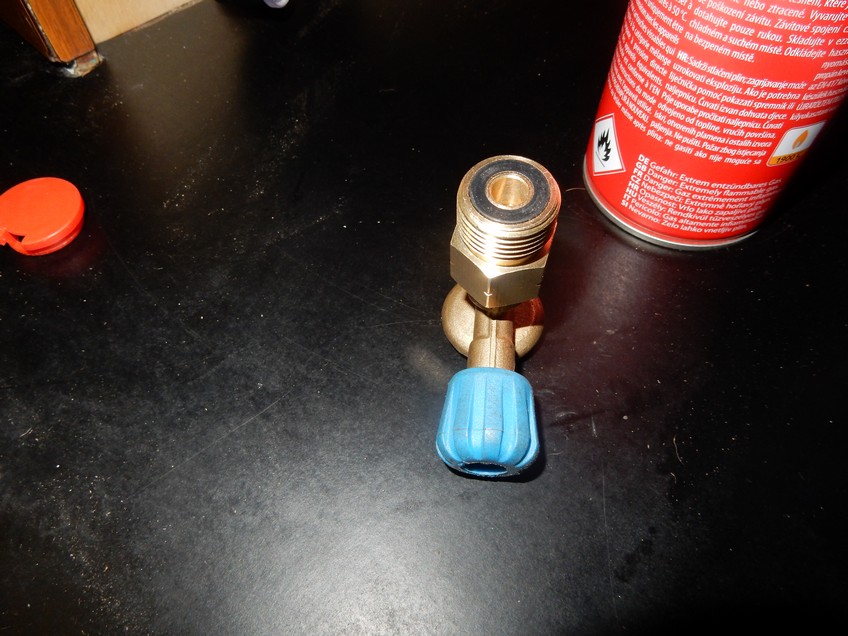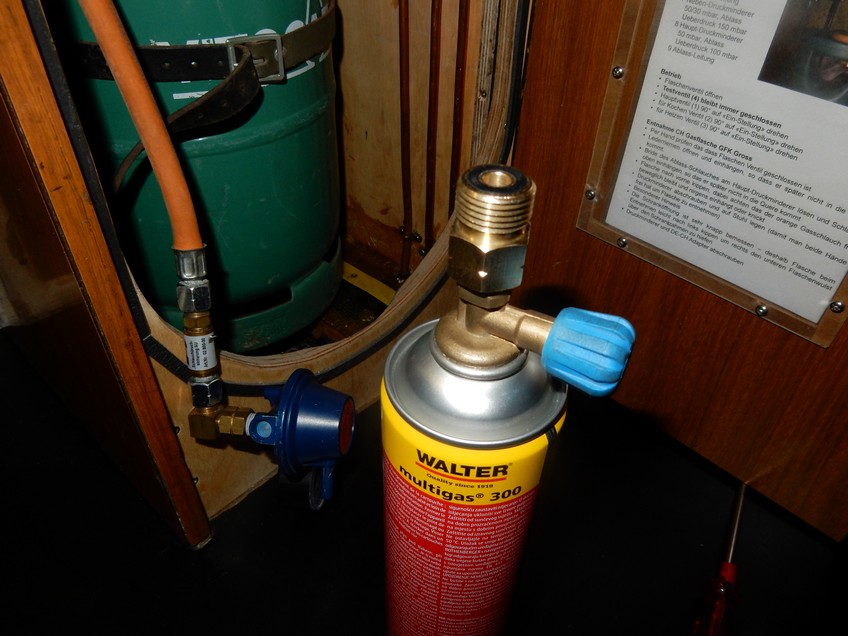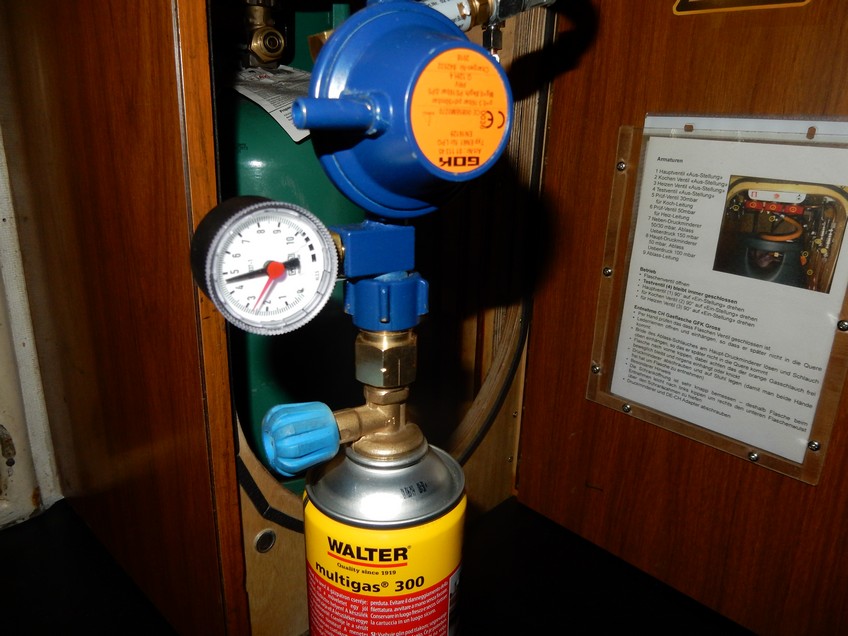Gas Installation and test certificate
All statements made here are without guarantee.
(sorry some links are only in german/french)
Rather by chance I learned in a forum about the new swiss regulations – there was a discussion about the periodic inspection and the obligation to provide proof at the swiss camping sites.
For the gas system in a camping vehicle, a technically correct installation and a periodic inspection are required. There are some very detailed regulations, such as: e. g. about mass for distances, pipe penetrations, fixings, mass for venting, etc. The gas bottle must be mounted in a sink (cavity or basin) with venting.
In the Swiss edict, Art. 32c1 liquefied gas plants, an “Working Group LPG” was founded by the Federal Government with the mandate to elaborate corresponding regulations.
https://www.admin.ch/opc/de/classified-compilation/19830377/index.html#a32c
The web page of the “Working Group LPG” is well aranged – the current installation regulations can be found in the “Regulations for Inspectors”
https://www.arbeitskreis-lpg.ch/
https://www.arbeitskreis-lpg.ch/kontrolleure/dokumente-kontrolleure/
The Swiss regulations correspond mostly to those of the EU (german respectively). So it’s easy to get information and ideas from the Internet. On Youtube you can find some helpful (and less helpful) movies on the subject. There are also contributions to the “gas test at the caravan” «Gasprüfung am Wohnwagen» – so you can get a first impression of how the test is carried out and what requirements have to be met when building your own “gas system”
A very good description can be found here:
http://www.reisemobilist.de/dow/Wissenswertes%20ueber%20Fluessiggasanlagen%20in%20Wohnmobilen.pdf
Gas System Couchette
When I took over the Estafette in 2006, a “two-bottle gas system” was installed. There was no separation between electric conductors and gas system. As ventilation there was only the ventilation grille which is installed in the door at floor level. The Rechaud did not have an automatic, temperature-dependent, switch-off (happily the heater did). The gas case of my couchette is now glued and sealed with foam rubber – the door has a mechanical lock. For the safe attachment of the bottle, an auxiliary frame is laminated. The auxiliary frame has a bottle torsion lock
If a gas chamber is horizontally accessible from the inside, the distance to the lower door border must be at least 50mm – i. e. the bottle must be in a “sink” For this purpose, I have installed a front frame inside the box that meets this requirement. Ventilation may be carried out through a single opening, which must be at least 100cm2 – depending on the grid area, the total area must be correspondingly larger. The ventilation must have minimum distances to windows, exhaust outlet and petrol tank. If there is a heating system with an underfloor exhaust gas stack, the gas box ventilation must not be in the same “duct” – with the Estafette this is not a problem thanks to the many cross profiles. A “hose breakage protection” is prescribed directly on the regulator. The maximum “regulator output” in the caravan sector must not exceed 1. 5 litres/min. Existing 50 mbar gas systems are granted by “grandfathering” – if a new 30 mbar device has to be retrofitt, it may be used together with a 30 mbar pre-pressure regulator.
The pre-pressure regulator can be mounted directly in the gas box, but may also be mounted directly in front of the device (Attention: Safety valve with hose connection -> hose to the outside is mandatory) The lines / devices must be marked accordingly. The French 37 mbar standard is equated with the 30 mbar standard. My 37 mbar ENO 3 flame cooker works well with it’s 30 mbar source. The regulators used in the caravan sector must have a safety blow-off valve. The blue marine regulators may also be used in caravans – they normally have a hose connection at the blow-off valve – I have missed such a hose connection on the usual models for camping/caravans.
With my two controllers (50 mbar for the heating, 30 mbar pressure regulator for the 37 mbar cooker), I have diverted the blow-out connections to the outside via hose and copper pipe. The main regulator (50 mbar) releases overpressure at 120 mbar, the pressure regulator releases at 150 mbar. Copper pipes must be provided with reinforcement sleeves. In case of pipe penetrations (if no bulkhead fittings are used), the pipes must be protected against mechanical friction – e. g. with pieces of rubber hose. The pipes must be fixed at intervals with clamps. Minimum distances to the exhaust must also be kept or the pipes must be protected against heat with protector sheets
For the winter period the door can be kept open with an magnet holder

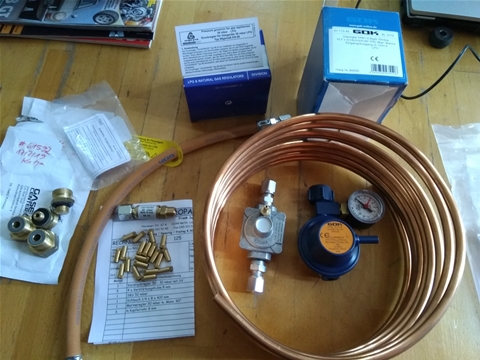
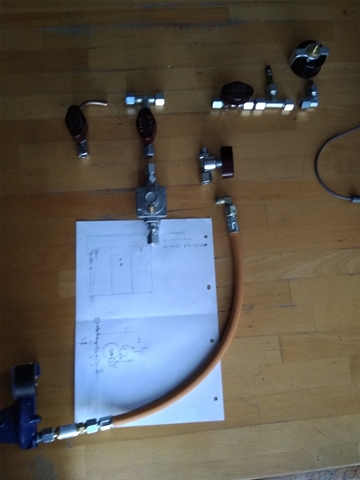
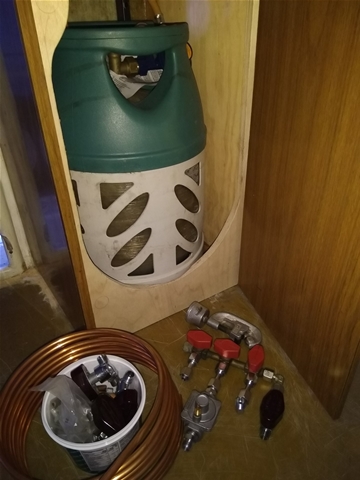
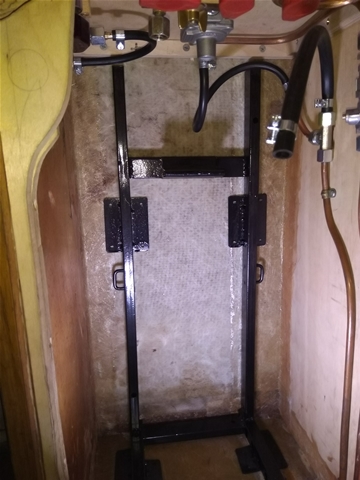
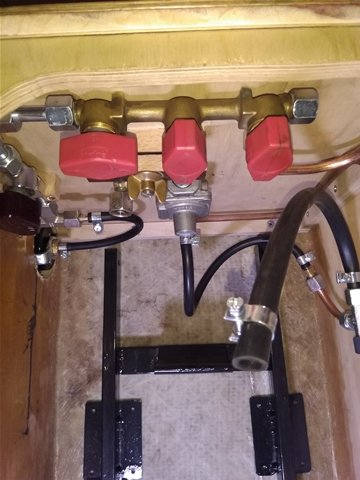
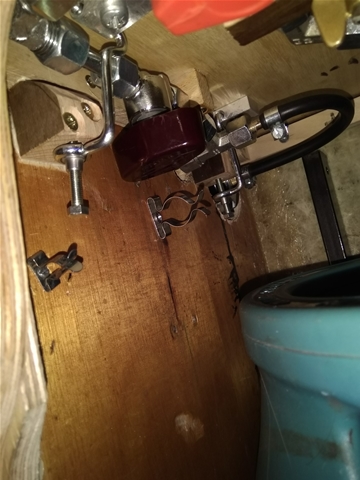
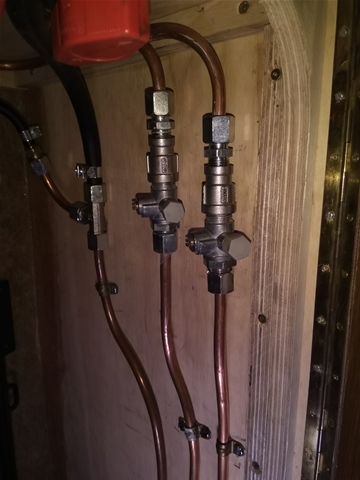
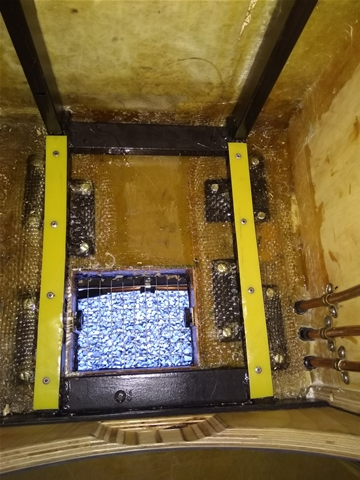

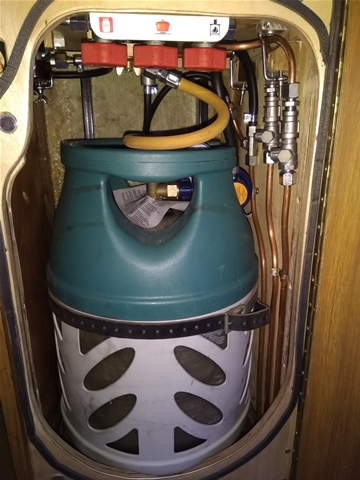
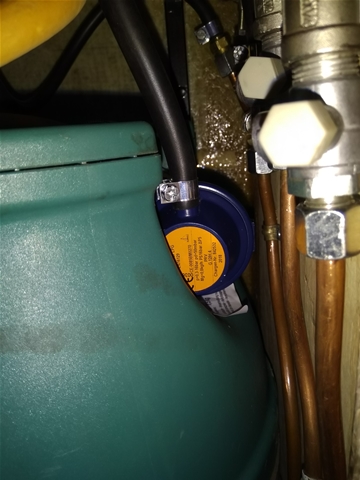
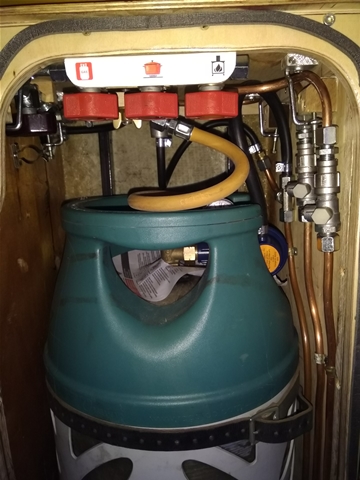
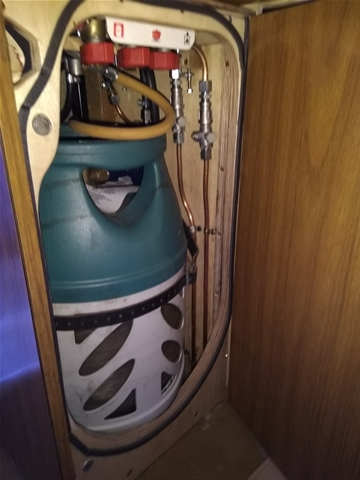
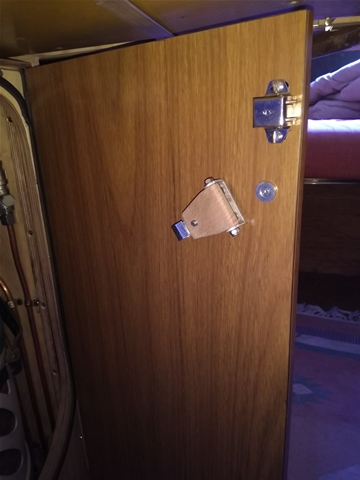
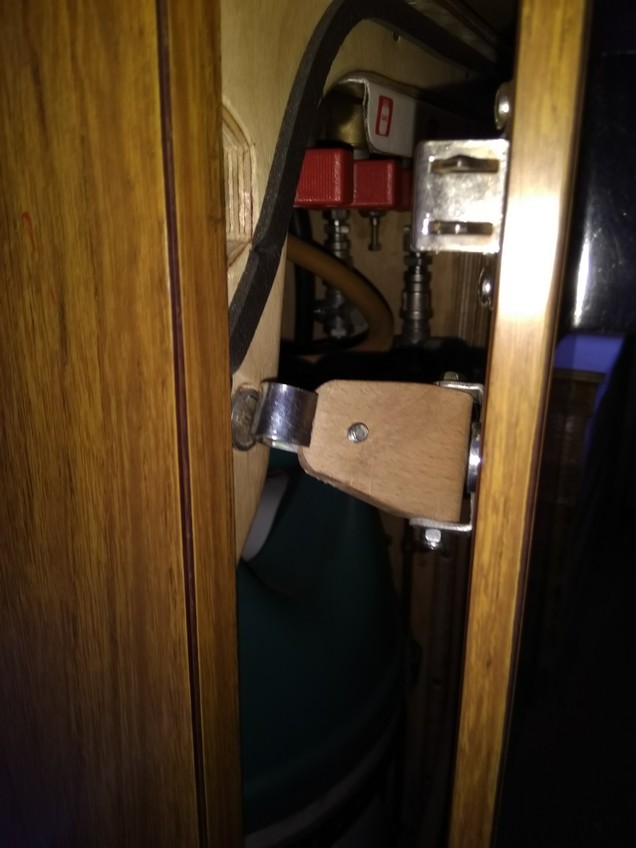
Built-in low pressure gauge
The gas box on my couchette contains a permanently installed low pressure gauge – this makes it easy and convenient to do a pressure hold check before the holidays / weekend getaways. This gives you great security because you can detect a pressure loss at all (e. g. , a pressure drop). Secondly, it is difficult to detect the formation of bubbles in very small leks (using lek spray). The pressure gauge makes it much easier to find such lekages if you restrict the lekage range by shut-off the valves (exclusion rule). The test pressure of the Couchette is now stable at 150 mbar for several days.
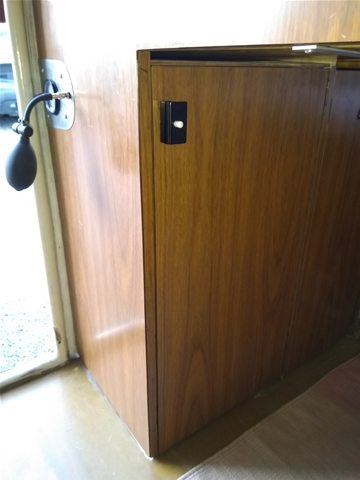
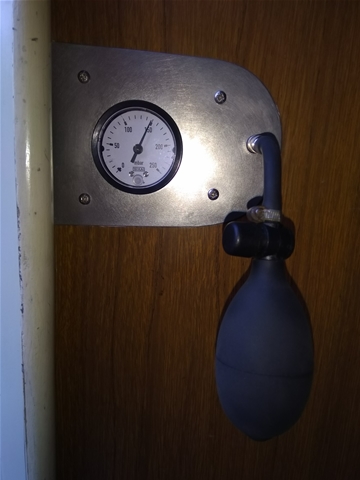
Supplement
Actual in my Couchette a german pressure controller is mounted. on Ebay.de (https://www.hausundwerkstatt24.de) i found a connector 21.8mm which fits to the the scre valve of my CFH-AV121 workshop-burner. Both are also available at amazon:
CFH-Connection Valve AV121 (Euro screw cartridge to 3/8 left)
Connector 3/8″ left to 21.8 left (german controller)
The adapter doesn’t take up much space and the euro screw cartridges are found on every corner.
